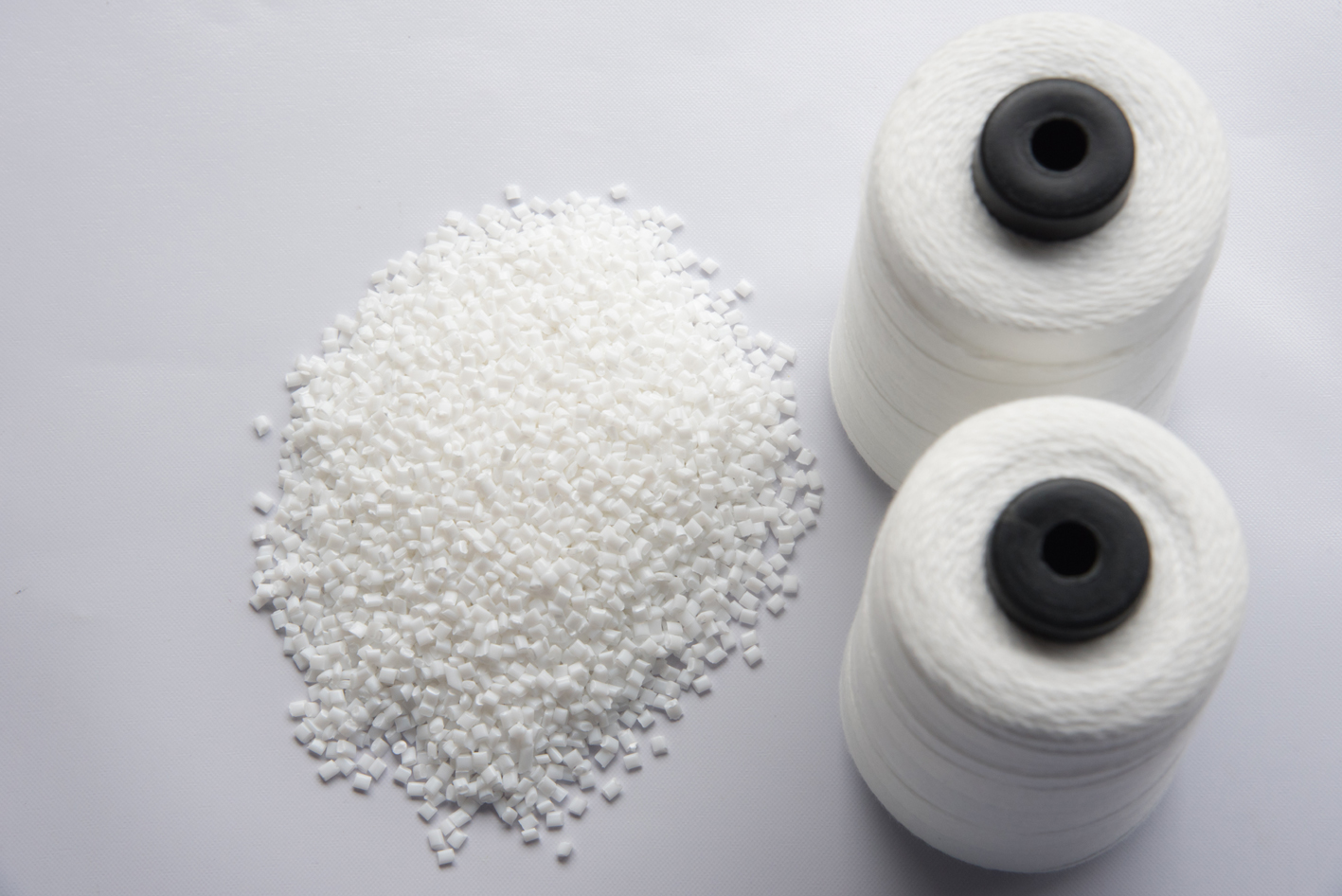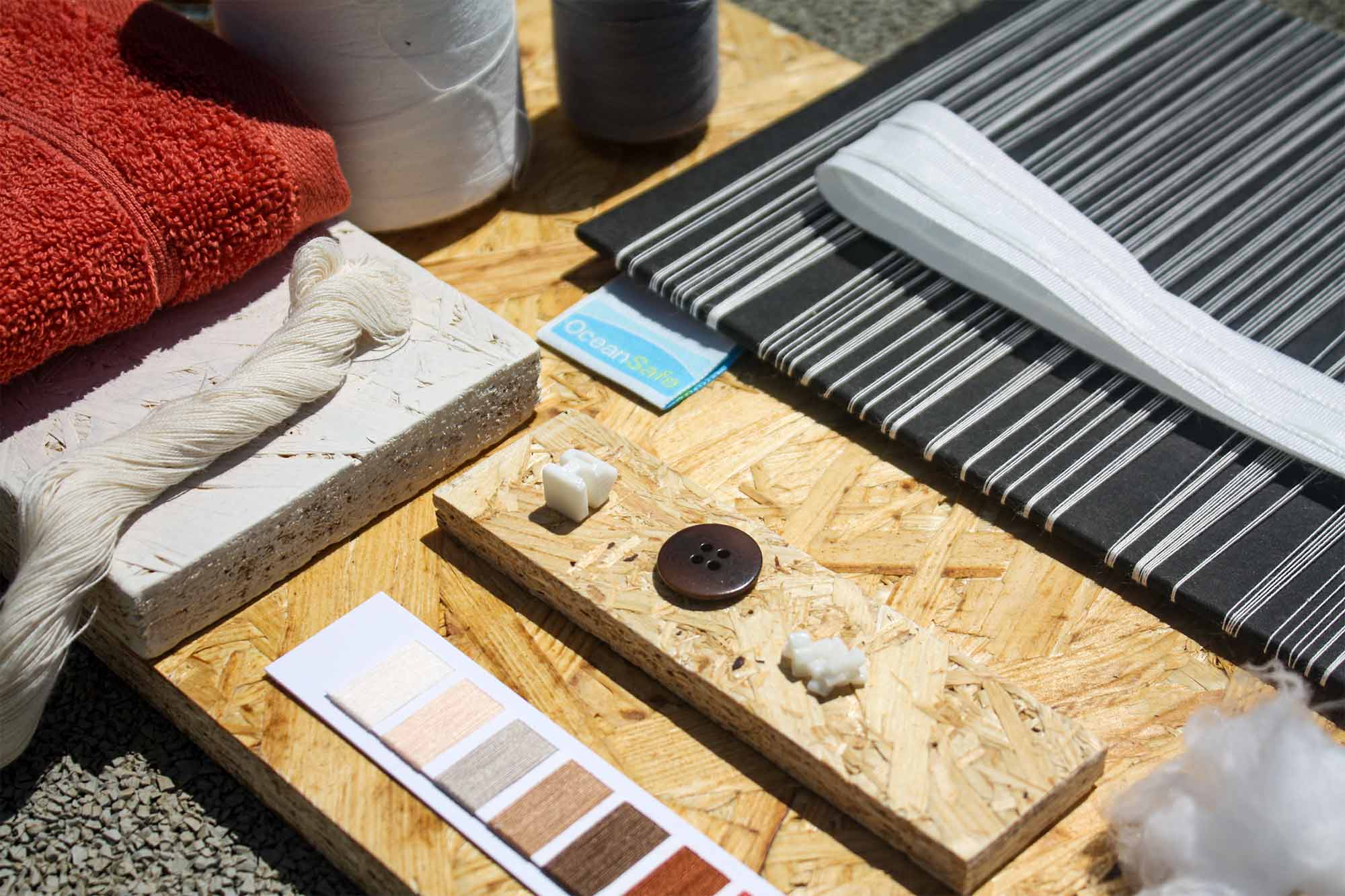How Ocean Safe is harnessing technology to transform the textile industry
Ocean Safe is on a mission to transform the textiles industry through its game-changing technology. It introduced its first material, naNea in 2021, as a circular alternative to conventional polyester. naNea biodegrades by more than 93% in seawater within 99 days.

We spoke to CEO and CMO, Manuel Schweizer and Matthias Fuchs to learn more about their groundbreaking technology, their unique business model, and how the Cradle to Cradle Certified® provides them with a robust framework that aligns with their dedication to circularity and environmental responsibility.
Ocean Safe is not a traditional manufacturer, nor brand or retailer. Can you explain your business model?
Manuel: Indeed, OceanSafe operates a unique model and is centered around being a textile technology company. Instead of being a manufacturer, retailer or stockist, we specialize in the development of advanced textile materials, chemistry and components.
The essence of our business is the creation of proprietary textile fibers and yarns, designed to align with both the biological and technical cycles. These materials form the foundation of our technology-driven approach. Notably, our first textile material, naNea, serves as a circular replacement for conventional polyester.
Rather than producing final consumer products ourselves, we collaborate closely with partner manufacturers and brands. They leverage our technology and have the opportunity to bring to market Cradle to Cradle Certified® products, ensuring an environmentally responsible and certified finished product.
Why did you choose Cradle to Cradle Certified® as a standard?
Matthias: Selecting Cradle to Cradle Certified® as our standard is our deliberate choice for a holistic and comprehensive approach within the textile industry. The certification aligns seamlessly with our values and priorities, addressing crucial aspects across both product development and responsibility along the entire value chain.
The Cradle to Cradle Certified® standard is particularly appealing to us because it covers the essential facets that we consider critical in the textile sector. From product design to manufacturing processes and beyond, the standard offers a robust framework that resonates with our dedication to circularity and environmental responsibility.
Opting for a minimum of Gold level is a deliberate and ambitious choice on our part. We believe that such a high standard is essential for meeting the planet's needs. By voluntarily setting Gold as the minimum requirement, we not only challenge ourselves to uphold the most rigorous sustainability criteria but also signal our unwavering commitment to contributing positively to the environment. This decision underscores our belief in pushing the boundaries of what is possible in sustainable practices within the textile industry.
What benefit does the certification bring to OceanSafe?
Manuel: Attaining Cradle to Cradle Certified Gold for both our products and those of our partners serves as a remarkable differentiator in the industry. Professionals well-versed in the standard swiftly grasp the significant accomplishments involved in achieving Gold status, underscoring our commitment to exceptional sustainability practices.
While it's true that not all industry colleagues may possess in-depth knowledge of the standard, we recognize the collective responsibility to improve awareness and communication regarding these meaningful distinctions. By doing so, we aim to foster a broader understanding of the value and impact of Cradle to Cradle Certified Gold within our industry.

Can you tell us more about the materials you develop?
Matthias: Central to OceanSafe's commitment to circular design is our game-changing material, naNea, introduced in 2021 as a circular alternative to conventional polyester. What sets naNea apart is that it has been designed for both the biological and technological cycles, and that it is Cradle to Cradle Certified® at Gold level.
Undergoing rigorous testing for biodegradability in seawater according to ASTM D6691 standards, naNea exhibited remarkable results, with a biodegradation rate exceeding 93% in just 99 days. This exceptional performance is a game-changer for the textile industry, traditionally reliant on conventional synthetics. In the Material Health Category, naNea attains the Platinum level. And in terms of performance and durability, naNea performs very much like conventional PET.
The fast-growing demand for naNea is highly encouraging for us, with an increasing number of brands and manufacturers incorporating it into their products and processes. This momentum enables us to scale up industrial production swiftly, fostering affordability and accessibility for volume-sector players in the textile industry. Furthermore, textile manufacturers appreciate naNea for its seamless integration into their production processes, further solidifying its positive impact on the industry's sustainable evolution.
What about the quality and longevity of your products?
Manuel: Ensuring the quality and longevity of our products is a top priority at OceanSafe. In developing new textile technologies, we recognize the importance of meeting client expectations.
Our commitment goes beyond environmental impact reduction; our products are designed to last as long as, if not longer than, conventional alternatives. We prioritize durability, ensuring our textiles withstand typical washing cycles, tear and maintain their aesthetic appeal over time, ultimately aiming to bring joy to our customers throughout the product's entire lifetime.

What are your next steps?
Manuel: These are exciting times at OceanSafe. We are in the project development stage with various global brands who wish to integrate OceanSafe technology and materials into their ranges. We continuously sign up new manufacturers who use our materials.
Looking ahead to 2024 and beyond, we're set to unveil several new textile materials that have been in our R&D pipeline. These developments promise to be groundbreaking, potentially reshaping the textile material landscape.
In exciting news, we've recently concluded a successful seed funding round. This financial support will play a pivotal role in advancing our R&D initiatives and strengthening our presence in the market.
What does ‘made for tomorrow’ mean for you?
Manuel: You can develop and enjoy a high-quality and healthy product today - and the next generations have nothing to clean up. The product becomes a nutrient, or a new product of equal value. This vision is fantastic.